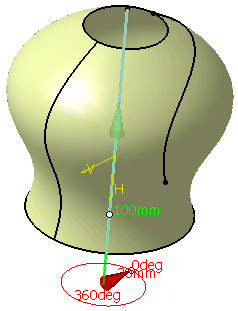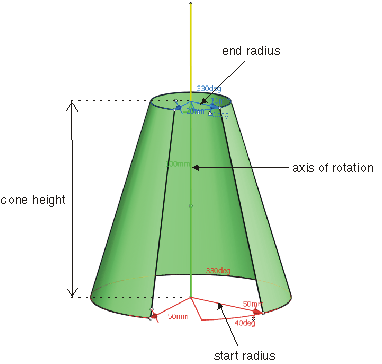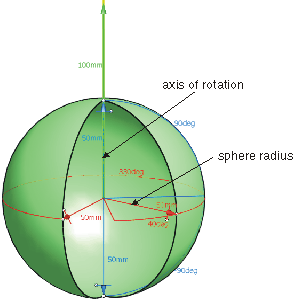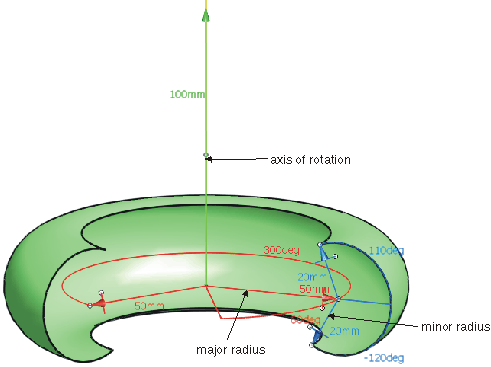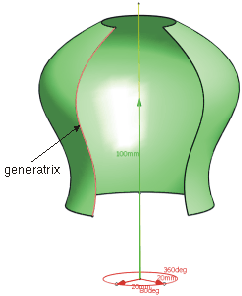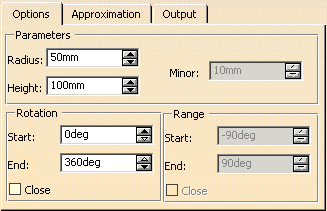This task shows how to create a surface by revolving a planar profile about an axis.
In ICEM Surf the creation of surfaces of revolution covers the creation of the shape of spherically symmetric surfaces for which the generator curve will be provided (surface of revolution types Cylinder, Cone, Sphere, Torus and Barrel), as well as the generation of surfaces by rotation of previously defined curves (Freeform).

Open the SurfaceOfRevolution.CATPart document.
-
Click Surface of Revolution
 .
.
The Surface of Revolution dialog box appears.
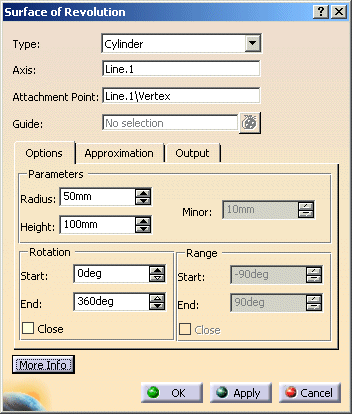

-
Start and end angle can be modified by manipulating the handles at the tips of the red manipulators.

-
Start and end ranges can be modified by manipulating the handles at the tips of the blue manipulators.
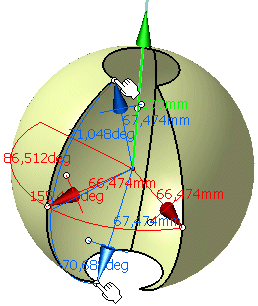
-
Activate the display of the element Sketch.1 via 'Hide/Show' in the contextual menu.
-
Set the type of surface of revolution Freeform in the Surface of Revolution dialog box and select Sketch.1 as Guide.
-
Click OK to create a surface of revolution from the freeform curve.
